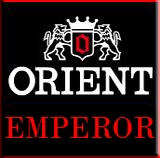|
|
|
FORD SIERRA RS COSWORTH
1/18 NOREV (182770)
Year/Anno : 1986
Color/Colore : Grigio /Grey
My rating /Mio Voto : 83/100
Value for Money/Rapporto qualità prezzo : 87/100
Original price/Prezzo originale : €uro 59
Materiale: Diecast senza aperture/ Die-cast without opening parts
Clicca sul banner in alto per tornare alla Homepage e visionare altri modelli.
Click the banner on the top to return at the Homepage and see the other models of my collection.
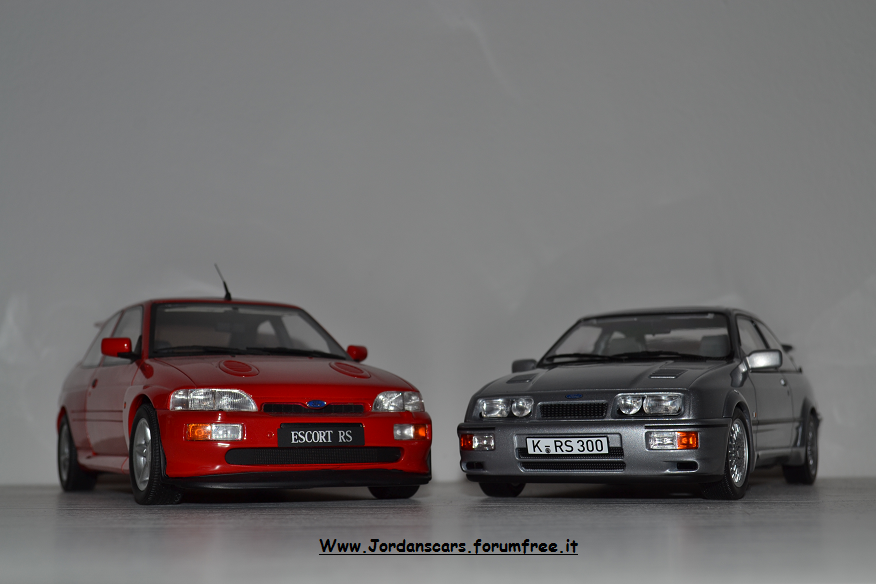

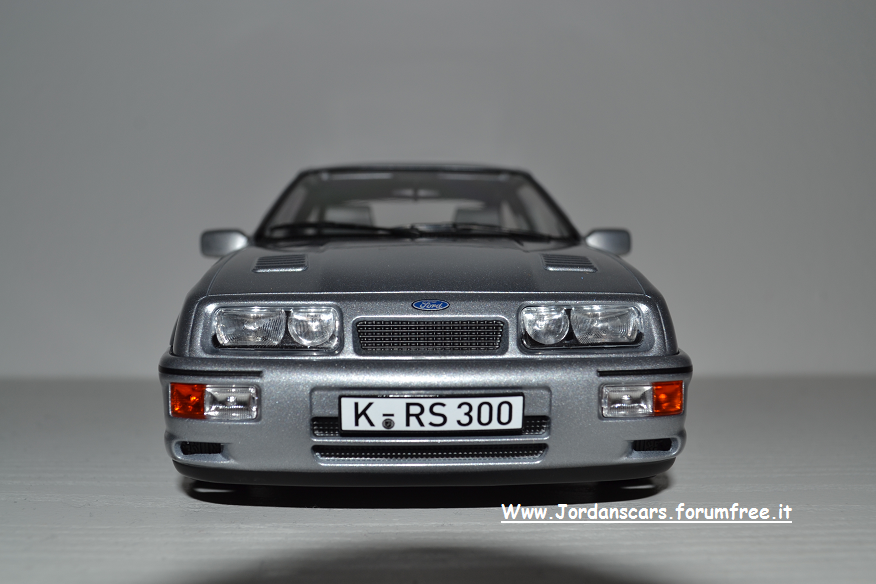
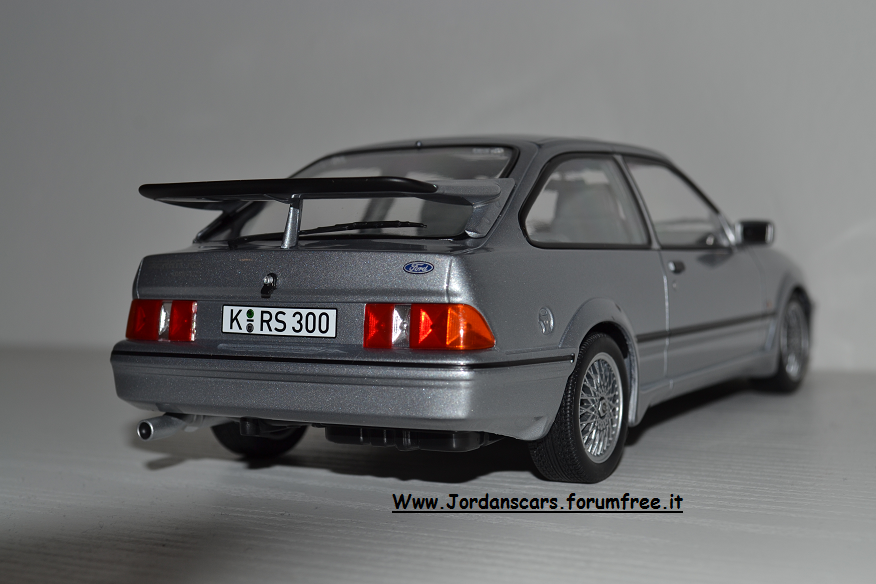

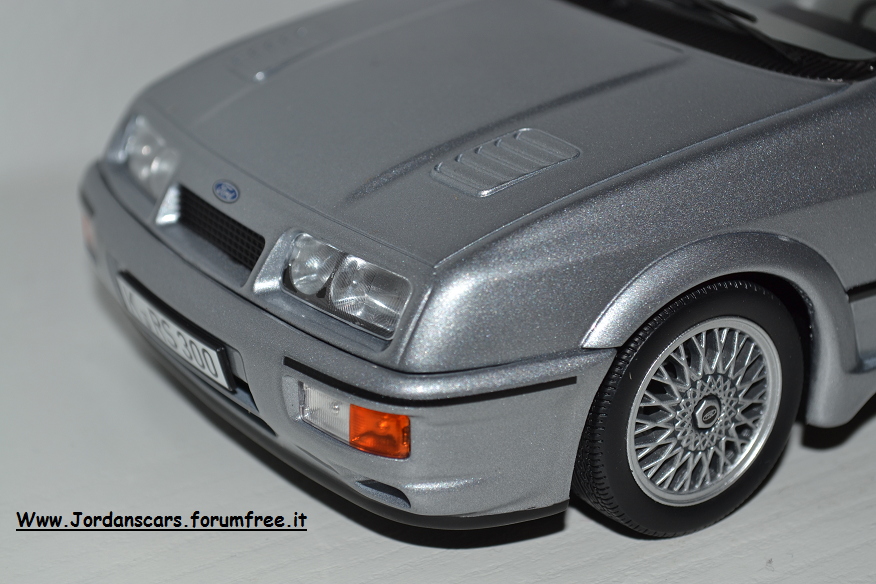
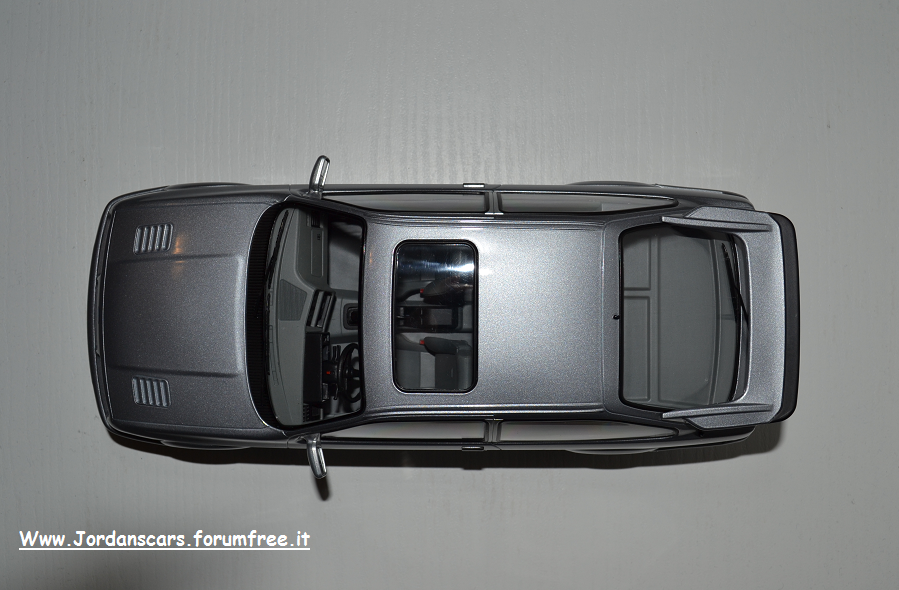
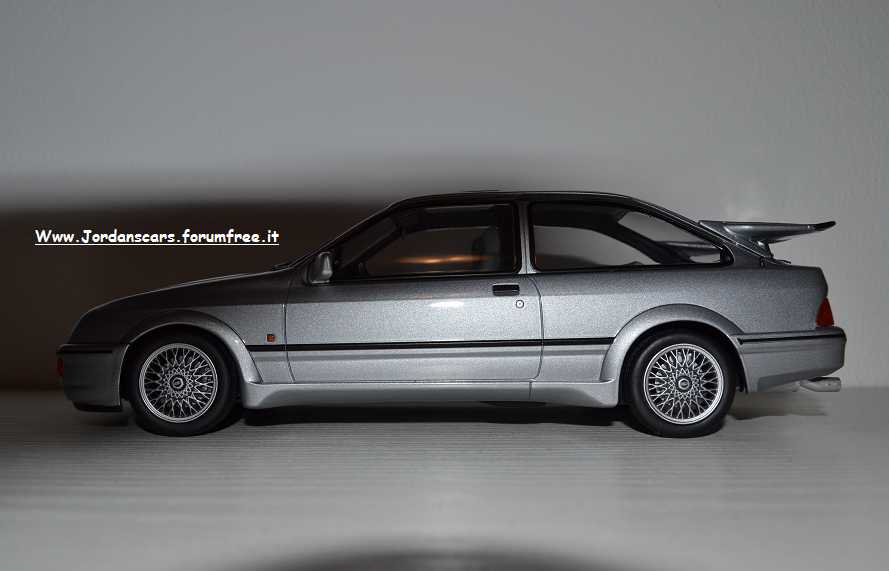
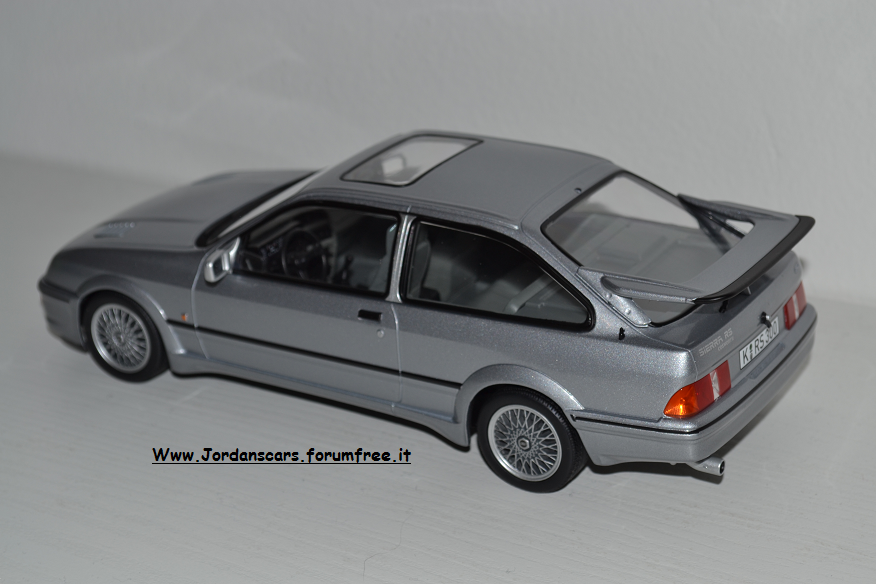
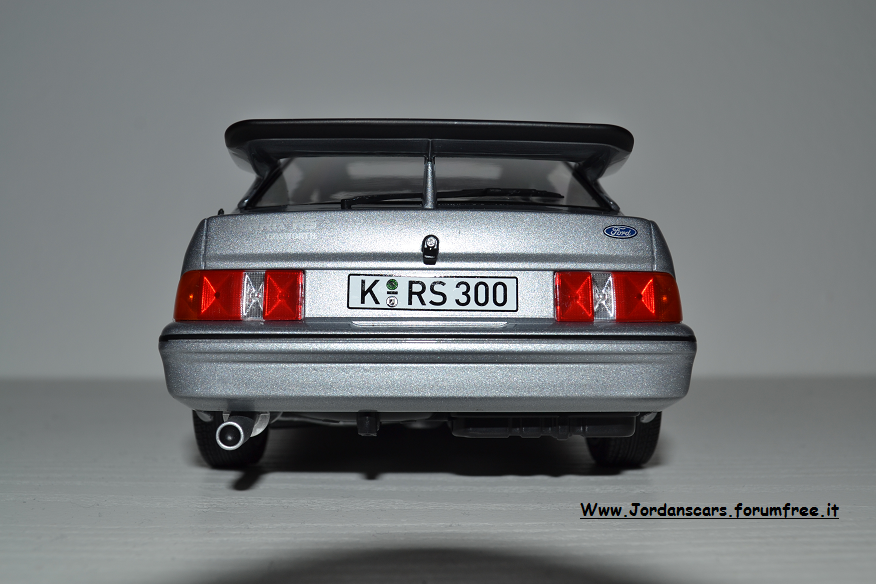
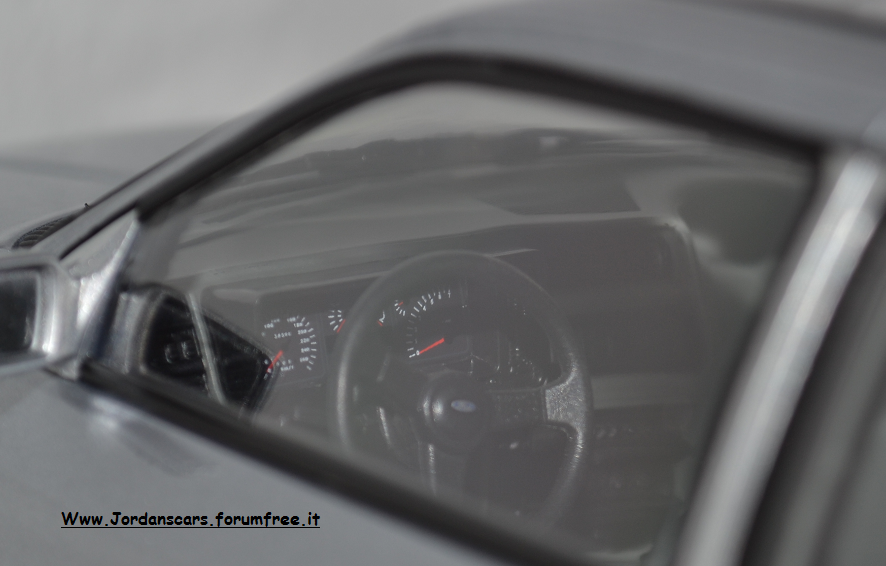
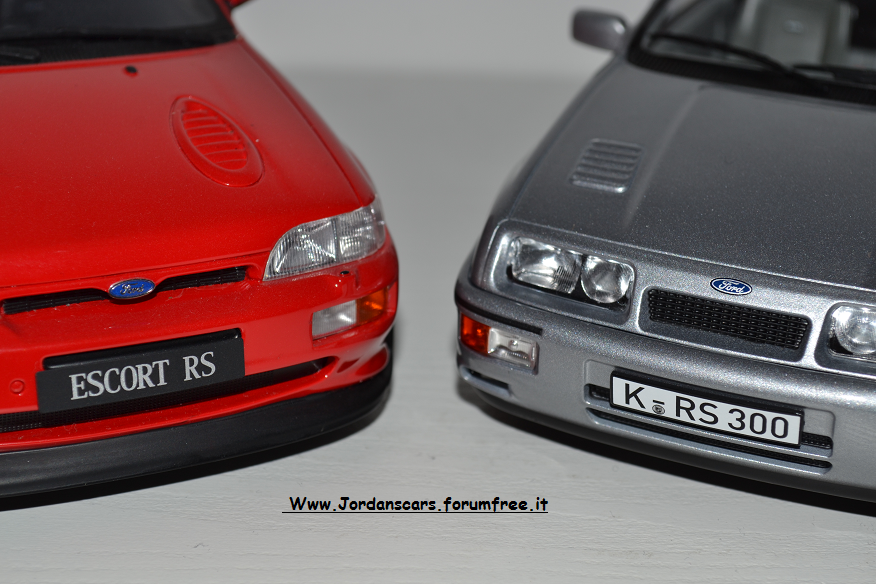
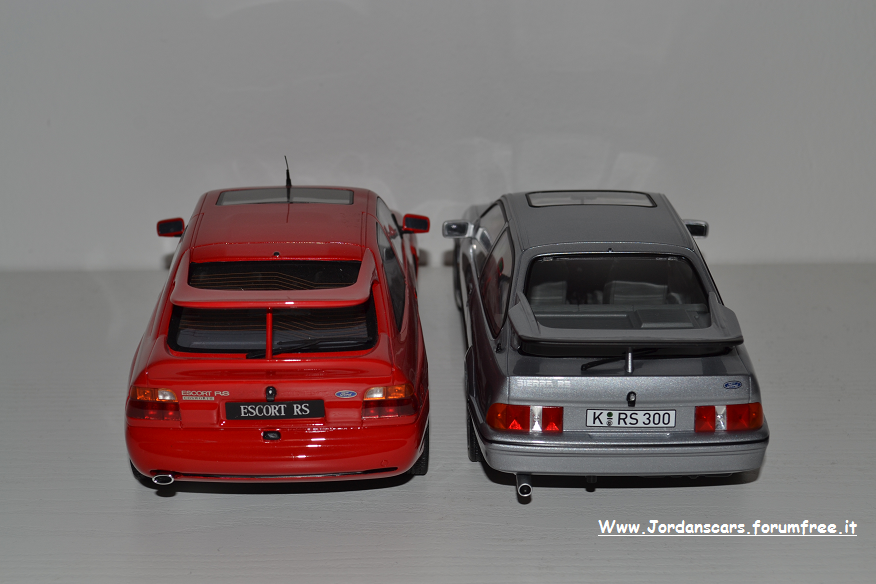
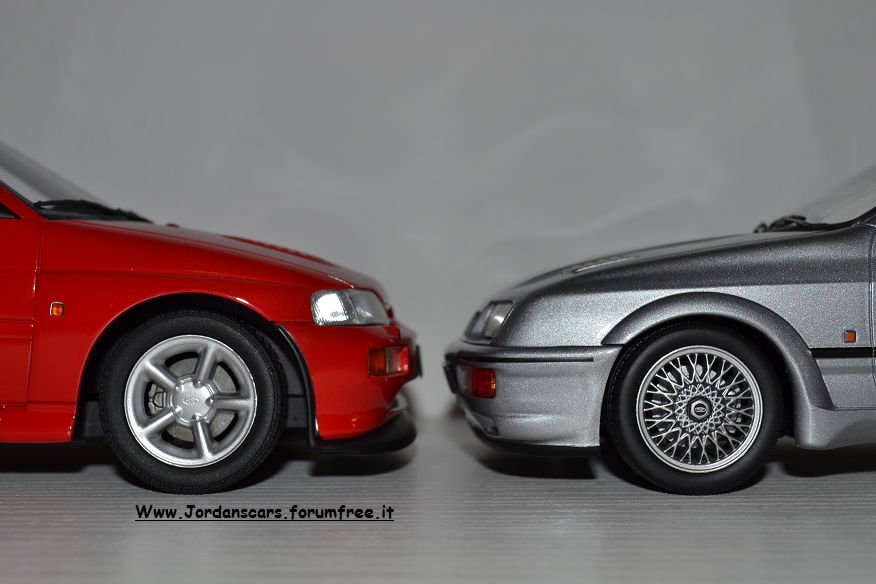

STORIA:
La Ford Sierra è un'autovettura di classe media prodotta dalla casa automobilistica statunitense Ford tra il 1982 ed il 1993.
Erede della Ford Taunus TC e della Ford Cortina nei Paesi anglosassoni, la Sierra si presentava sul mercato come modello totalmente nuovo, sebbene ne ereditasse molti motori e l'impostazione tecnica di base: motore anteriore longitudinale e trazione posteriore. Il pianale era completamente nuovo e lo dimostra lo schema della sospensione posteriore multilink a ruote indipendenti anziché ad assale rigido. Altra novità tecnica di rilievo fu l'adozione del cambio a 5 marce di serie o in opzione su tutte le versioni della gamma.
Ma più che la tecnica, ad essere rivoluzionaria (non solo rispetto alla Taunus) era la linea della vettura (direttamente derivata da un prototipo da salone, la Probe III esposta al Salone di Francoforte 1981[1], fatto raro nel mondo dell'automobile), che riprendeva il concetto di due volumi e mezzo con portellone (vale a dire una due volumi con accenno di coda), introdotta con la Escort Mk3, reinterpretandola però in chiave assai più tondeggiante e aerodinamica Il coefficiente di penetrazione aerodinamica si attestava a 0,34 per le versioni standard (0,32 per la XR4i) e contribuiva a garantire consumi ridotti e velocità di punta elevate in rapporto alla potenza massima disponibile.
La vettura suscitò subito molto interesse in Europa anche se in alcuni paesi, fra cui l'Italia, la sua carrozzeria fu giudicata inizialmente troppo "avveniristica" dalla tradizionale clientela della Taunus e i migliori risultati di vendita vennero raggiunti dopo qualche anno dall'introduzione sul mercato.
LA VERSIONE COSWORTH:
Il progetto venne definito da Stuart Turner nella primavera del 1983. Turner entrò in contatto con Walter Hayes, al tempo vice presidente della sezione Pubbliche Relazioni della Ford, per avere supporto per il progetto e ottenne il consenso.
Nel frattempo, la Cosworth presentò la sua nuova creazione, ovvero il motore YAA. Quest'ultimo era dotato di un doppio albero a camme, 16 valvole ed era basato sul blocco motore T88 della Ford, meglio conosciuto come Pinto. Questo prototipo, fornì a Turner la base necessaria per il suo progetto. Infatti, venne in seguito richiesta una versione turbo (Cosworth YBB) con 182 CV per la versione stradale e 304 CV per le versioni da corsa. La Cosworth accettò, ma incluse due clausole nel contratto: il motore in versione stradale doveva avere almeno 206 CV e la Ford avrebbe dovuto comprare non meno di 15.000 motori. Per la futura Sierra RS, erano state stimate appena 5000 unità, ma la Ford accettò comunque le condizioni. I 10.000 motori rimanenti, diventarono una delle ragioni per cui venne prodotta anche una seconda versione a quattro porte della Sierra RS Cosworth.
Come trasmissione, venne scelta la Borg-Warner T5 utilizzata pure dalla Ford Mustang, ma a causa delle caratteristiche della Sierra, vi furono dei problemi. La Borg-Warner dovette quindi realizzare una linea di produzione speciale per le trasmissioni da utilizzare nella Sierra RS Cosworth.
Lothar Pinske, responsabile del corpo vettura, ottenne carta bianca per cercare di rendere la Sierra stabile ad alte velocità. L'esperienza mostrò che la versione coupé della vettura possedeva perdite di aderenza significative addirittura a velocità moderate.
Dopo numerosi test nella galleria del vento e nel circuito di Nardò in Italia, un prototipo venne presentato al management. Quest'ultimo era basato sulla XR4i con modifiche aerodinamiche in fibra di vetro e alluminio. Pinske insistette dicendo che le modifiche estetiche erano necessarie per la riuscita del progetto. L'alettone posteriore era necessario per garantire la stabilità anche a 300 km/h, mentre la presa d'aria tra i fanali anteriori serviva per fornire l'intercooler di aria.
Nel 1984 Walter Hayes visitò i rivenditori Ford europei, per sondare le potenzialità del mercato. I risultati furono deprimenti: si stimò approssimativamente la vendita di sole 1500 vetture.
Hayes non si arrese e continuò a seguire il marketing del progetto. I rivenditori vennero invitati a sessioni di prova della vettura e in questo modo aumentò l'entusiasmo per la nuova Sierra RS Cosworth. Inoltre, la Ford adottò alcune misure per ridurre il prezzo della vettura. Ad esempio, i colori disponibili furono solo tre (nero, bianco e blu pietra lunare) abbinati agli interni di colore grigio. La Sierra RS poteva essere acquistata con o senza la chiusura centralizzata e i finestrini elettrici. Infine, tipica caratteristica di tutte le Ford Cosworth fu l'alettone a coda di balena (whale tail), che si ritroverà negli anni novanta nelle Escort Cosworth, tra l'altro derivate proprio dalla Sierra Cosworth.
_______________________________________________________________
The Ford Sierra RS Cosworth is a high-performance version of the Ford Sierra that was built by Ford Europe from 1986 to 1992. It was the result of a Ford Motorsport project with the purpose of producing an outright winner for Group A racing in Europe.
The project was defined by Stuart Turner in the spring of 1983. He had recently been appointed head of Ford Motorsport in Europe, and he realised right away that Ford was no longer competitive in this area.
Turner got in touch with Walter Hayes, at the time the vice-president of public relations at Ford, to get support for the project. Hayes had earlier been the driving force behind the development of the Ford GT40 that won Le Mans in 1966, and the Cosworth DFV engine that brought Ford 154 victories and 12 world championships in Formula One during the 1960s and 1970s. Hayes found the project very appealing and promised his full support.
Turner then invited Ken Kohrs, vice-president of development, to visit Ford’s longtime partner, the automotive company Cosworth, where they were presented a project developed on Cosworth’s own initiative, the YAA engine. This was a twin cam, 16-valve engine based on Ford’s own T88 engine block, better known as the Pinto. This prototype proved an almost ideal basis for the engine Turner needed to power his Group A winner.
Therefore, an official request for a turbocharged version (designated Cosworth YBB) capable of 180 HP on the street and 300 HP in race trim, was placed. Cosworth answered positively, but they put up two conditions: the engine would produce not less than 150 kW (204 HP) in the street version, and Ford had to accept no fewer than 15,000 engines. Turner’s project would only need about 5,000 engines, but Ford nevertheless accepted the conditions. The extra 10,000 engines would later become one of the reasons Ford also chose to develop a four-door, second generation, Sierra RS Cosworth.
To find a suitable gearbox proved more challenging. The Borg-Warner T5, also used in the Ford Mustang, was chosen, but the higher revving nature of the Sierra caused some problems. Eventually Borg-Warner had to set up a dedicated production line for the gearboxes to be used in the Sierra RS Cosworth.
Many of the suspension differences between the standard Sierra and the Cosworth attributed their development to what was learned from racing the turbocharged Jack Roush IMSA Merkur XR4Ti in America and Andy Rouse's successful campaign of the 1985 British Saloon Car Championship. Much of Ford's external documentation for customer race preparation indicated "developed for the XR4Ti" when describing parts that were Sierra Cosworth specific. Roush's suspension and aerodynamics engineering for the IMSA cars was excellent feedback for Ford. Some production parts from the XR4Ti made their way into the Cosworth such as the speedometer with integral boost gauge and the motorsport 909 chassis stiffening plates.
In April 1983, Turner’s team decided on the Sierra as a basis for their project. The Sierra filled the requirements for rear wheel drive and decent aerodynamic drag. A racing version could also help to improve the poor, and somewhat undeserved, reputation that the Sierra had earned since its introduction in 1982.
Lothar Pinske, responsible for the car’s bodywork, demanded carte blanche when it came to appearance in order to make the car stable at high speed. Experience had shown that the Sierra hatchback body generated significant aerodynamic lift even at relatively moderate speed.
After extensive wind tunnel testing and test runs at the Nardò circuit in Italy, a prototype was presented to the project management. This was based on an XR4i body with provisional body modifications in fibreglass and aluminium. The car’s appearance raised little enthusiasm. The large rear wing caused particular reluctance. Pinske insisted, however, that the modifications were necessary to make the project successful. The rear wing was essential to retain ground contact at 300 km/h, the opening between the headlights was needed to feed air to the intercooler and the wheel arch extensions had to be there to house wheels 10” wide on the racing version. Eventually, the Ford designers agreed to try to make a production version based on the prototype.
In 1984, Walter Hayes paid visits to many European Ford dealers in order to survey the sales potential for the Sierra RS Cosworth. A requirement for participation in Group A was that 5,000 cars were built and sold. The feedback was not encouraging. The dealers estimated they could sell 1,500 cars.
Hayes did not give up, however, and continued his passionate internal marketing of the project. As prototypes started to emerge, dealers were invited to test-drive sessions, and this increased the enthusiasm for the new car. In addition, Ford took some radical measures to reduce the price on the car. As an example, the car was only offered in three exterior colours (black, white and moonstone blue) and one interior colour (grey). There were also just two equipment options: with or without central locking and electric window lifts.
MODELLI CORRELATI:
Lancia Delta Evoluzione Martini6 ---> https://jordanscars.forumfree.it/?t=69217927
|
|





















